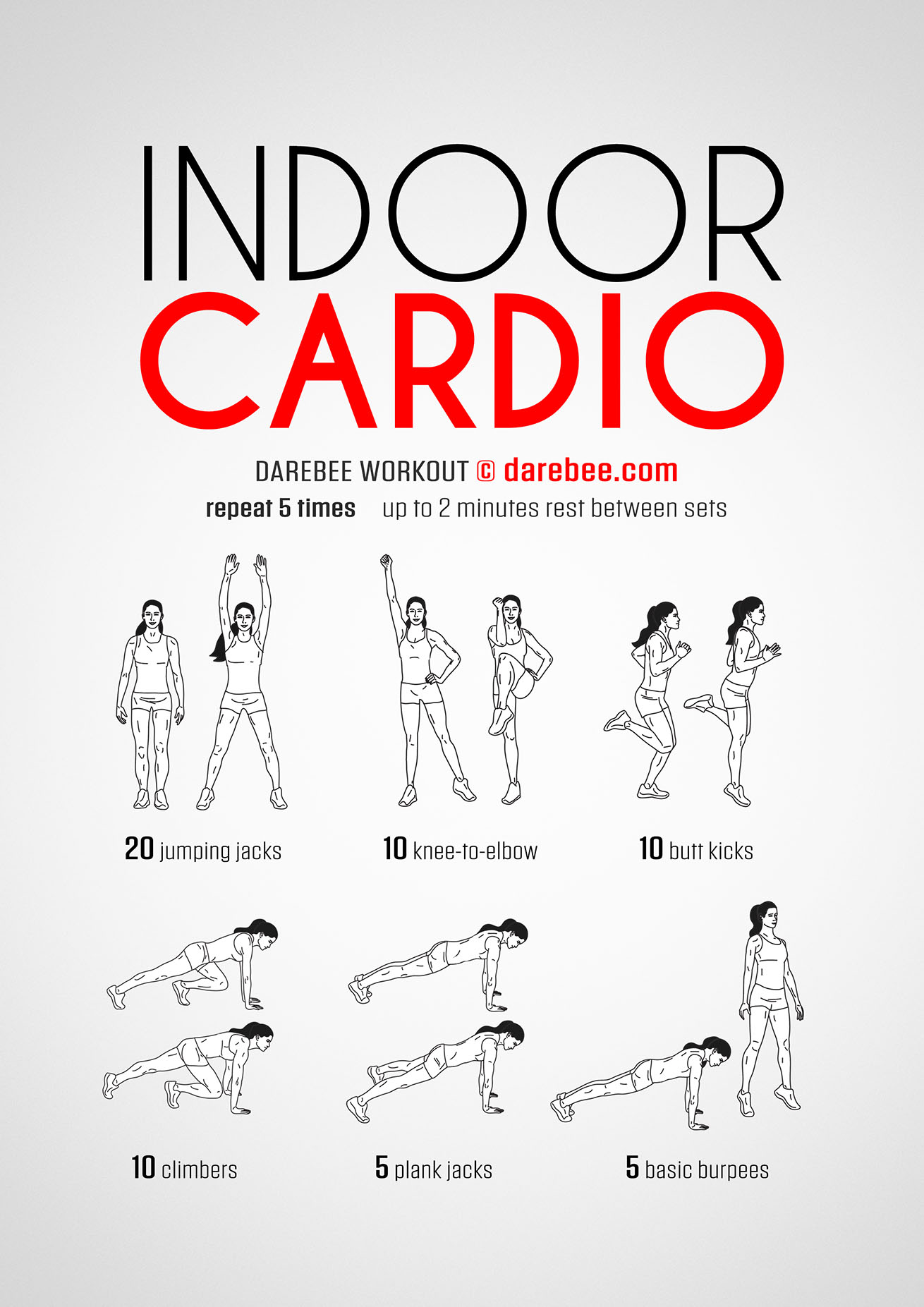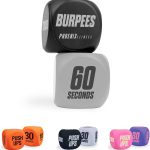Cardio exercises between sets can boost your workout efficiency and improve cardiovascular health. They help burn extra calories and enhance endurance.
Incorporating cardio exercises between sets is a great way to elevate your fitness routine. This practice not only maximizes time but also keeps your heart rate up, ensuring a more effective workout. Activities like jumping jacks, burpees, or high knees can seamlessly fit into your strength training regimen.
These quick bursts of cardio can enhance fat loss and improve overall cardiovascular health. It also keeps the workout engaging, preventing monotony. For those aiming to improve both strength and endurance, blending cardio with weight training offers a balanced approach. Try adding these exercises to your routine for an elevated fitness experience.
Benefits Of Cardio Between Sets
Adding cardio exercises between your weightlifting sets can be very beneficial. It not only boosts your workout efficiency but also enhances overall fitness. Let’s dive into the key benefits of incorporating cardio between sets.
Enhanced Calorie Burn
Cardio between sets significantly increases calorie burn. Your heart rate stays elevated, which leads to more calories burned. This can be especially helpful for weight loss goals.
Consider these simple cardio exercises:
- Jumping jacks
- High knees
- Burpees
Each of these exercises keeps your metabolism high. You can achieve more in less time. This makes your workout more efficient and effective.
Improved Cardiovascular Health
Doing cardio between sets improves heart health. It strengthens your heart muscles and enhances blood circulation. This can lower the risk of heart diseases.
Let’s compare the benefits:
| Cardio Exercise | Benefit |
|---|---|
| Jumping jacks | Increases heart rate |
| High knees | Improves endurance |
| Burpees | Boosts overall fitness |
Incorporating these exercises helps in keeping your heart healthy. It also improves your stamina and energy levels.

Credit: www.pinterest.co.uk
Types Of Cardio Exercises
Cardio exercises between sets can boost your workout. They keep your heart rate up. This helps burn more calories. Let’s explore some types of cardio exercises.
Jump Rope
Jump rope is a great cardio exercise. It improves coordination and burns many calories. Start with basic jumps. Gradually, you can try more complex moves.
- Basic Jump: Jump with both feet together.
- Alternate Foot Jump: Jump from one foot to the other.
- Criss-Cross: Cross your arms while jumping.
High Knees
High knees are simple and effective. They engage your core and legs. Stand tall and lift your knees high. Alternate quickly between your left and right knees.
- Basic High Knees: Raise your knees to waist level.
- High Knees with Twist: Add a twist to work your obliques.
- High Knees in Place: Stay in one spot while lifting your knees.
| Exercise | Benefits |
|---|---|
| Jump Rope | Improves coordination, burns calories |
| High Knees | Engages core, strengthens legs |
Incorporating Cardio Into Weight Training
Combining cardio with weight training can boost your fitness results. It helps burn more calories and improves heart health. Adding cardio exercises between weight training sets is effective. This method keeps your heart rate up and maximizes workout efficiency.
Interval Timing
The timing between sets is crucial. Use short intervals for cardio exercises. Aim for 30 seconds to 1 minute. This keeps your heart rate elevated. It also gives your muscles a brief rest.
Interval timing can be adjusted based on your fitness level. Beginners may start with shorter intervals. Advanced athletes can increase the duration. Consistent timing ensures effective cardio integration.
Exercise Selection
Choosing the right cardio exercises is vital. Some effective options include:
- Jumping jacks
- High knees
- Burpees
- Mountain climbers
Jumping jacks are simple and effective. They engage multiple muscle groups. High knees improve leg strength and endurance. Burpees provide a full-body workout. Mountain climbers target the core and improve agility.
Mix different exercises for variety. This keeps your workout exciting and challenging. Ensure that cardio exercises complement your weight training goals.
Adding cardio between sets offers multiple benefits. It enhances cardiovascular endurance and helps in weight loss. It also improves overall fitness levels. This combination ensures a balanced workout routine.
Cardio exercises between sets can also reduce workout time. It eliminates the need for separate cardio sessions. This approach is efficient and effective for busy schedules.
Balancing Intensity And Recovery
Balancing intensity and recovery is key during cardio exercises between sets. Striking the right balance ensures effective workouts without risking injury or burnout.
Avoiding Overtraining
Overtraining can lead to fatigue and injuries. It’s crucial to avoid this.
- Listen to your body: Rest if you feel exhausted.
- Alternate intensity: Mix high and low-intensity exercises.
- Set realistic goals: Don’t push beyond your limits.
Finding a balance helps maintain energy and performance. It also keeps your workouts enjoyable.
Monitoring Heart Rate
Monitoring your heart rate helps manage intensity and recovery.
| Age | Target Heart Rate (50-85%) |
|---|---|
| 20 | 100-170 bpm |
| 30 | 95-162 bpm |
| 40 | 90-153 bpm |
- Use a heart rate monitor: Track your beats per minute.
- Stay within the target zone: Avoid overexertion.
- Adjust intensity: Lower it if your heart rate is too high.
Keeping an eye on your heart rate ensures you stay within safe limits. It promotes effective and safe workouts.
Customizing For Different Fitness Levels
Cardio exercises between sets can boost your workout efficiency. Tailoring these exercises to your fitness level is key. Let’s explore how to customize for beginners and advanced individuals.
Beginner Approaches
Beginners should start with low-impact cardio exercises. These exercises are easy and safe.
- Marching in Place: Lift your knees high, swing your arms.
- Step Touches: Step to the side, touch your other foot.
- Arm Circles: Extend your arms, make big circles.
Begin with 30 seconds for each exercise. Rest for 30 seconds between sets. This will build your endurance gradually.
Advanced Techniques
Advanced individuals need more challenging exercises. These exercises should increase heart rate quickly.
- Burpees: Start in a squat, jump to plank, return and jump up.
- Mountain Climbers: Start in a plank, drive knees to chest rapidly.
- Jump Squats: Perform a squat, then jump explosively.
Perform each exercise for 45 seconds. Rest for only 15 seconds between sets. This keeps your heart rate high and maximizes calorie burn.
| Fitness Level | Exercise | Duration | Rest |
|---|---|---|---|
| Beginner | Marching in Place | 30 seconds | 30 seconds |
| Beginner | Step Touches | 30 seconds | 30 seconds |
| Advanced | Burpees | 45 seconds | 15 seconds |
| Advanced | Mountain Climbers | 45 seconds | 15 seconds |

Credit: darebee.com
Sample Workout Routine
Integrating cardio exercises between sets can boost your workout efficiency. Below is a sample workout routine that includes cardio activities between sets. This approach enhances cardiovascular health and burns extra calories.
Full-body Circuit
This circuit targets multiple muscle groups. Perform each exercise for 30 seconds. Take a 10-second rest before moving to the next.
| Exercise | Cardio Between Sets |
|---|---|
| Squats | Jumping Jacks |
| Push-ups | High Knees |
| Lunges | Burpees |
| Plank | Mountain Climbers |
Upper Body Focus
This routine focuses on the upper body. Perform each exercise for 30 seconds. Rest for 10 seconds before the next move.
| Exercise | Cardio Between Sets |
|---|---|
| Bicep Curls | Arm Circles |
| Tricep Dips | Jump Rope |
| Shoulder Press | Running in Place |
| Chest Press | Burpees |
Common Mistakes To Avoid
Cardio exercises between sets can boost your workout efficiency. But there are common mistakes that many make. These mistakes can affect your progress and increase injury risks. Let’s explore these mistakes and how to avoid them.
Ignoring Form
One major mistake is ignoring form. Proper form ensures you get the most out of each exercise. Poor form can lead to injuries and less effective workouts.
- Maintain a straight back.
- Keep your knees slightly bent.
- Engage your core muscles.
Always focus on your body’s alignment. Correct form helps in maximizing benefits.
Inadequate Warm-up
Skipping a warm-up is another common mistake. Warm-ups prepare your body for intense activities. They increase blood flow to muscles and reduce injury risks.
- Start with light jogging.
- Include dynamic stretches.
- Spend at least 5-10 minutes warming up.
Proper warm-up sets the tone for a successful workout session.
| Common Mistake | Why It’s Bad |
|---|---|
| Ignoring Form | Increases injury risk and reduces effectiveness. |
| Inadequate Warm-Up | Leaves muscles unprepared and prone to injury. |
By avoiding these mistakes, you can enhance your workout experience. Always prioritize form and warm-up for better results.

Credit: www.pinterest.co.uk
Tracking Progress And Adjustments
Tracking progress and making adjustments are essential for optimizing your cardio exercises between sets. Monitoring your performance ensures you achieve your fitness goals efficiently. Adjustments help you stay on track and prevent plateaus.
Setting Goals
Start by setting specific goals for your cardio exercises. Goals should be clear and achievable. Use the SMART criteria:
- Specific: Define exact outcomes you want.
- Measurable: Ensure you can track your progress.
- Achievable: Set realistic and attainable goals.
- Relevant: Align goals with your fitness objectives.
- Time-bound: Set a timeframe for achieving the goals.
Regular Assessments
Conduct regular assessments to evaluate your progress. Use different methods to measure your performance:
| Assessment Method | Description |
|---|---|
| Heart Rate Monitoring | Track your heart rate during exercises. |
| Time Trials | Measure the time taken for specific cardio activities. |
| Distance Tracking | Log the distance covered during each session. |
Assess your progress weekly or bi-weekly. Make necessary adjustments to your routine.
Use an exercise log to record your activities. Note the duration, intensity, and any changes made.
By keeping track of your workouts, you can identify patterns and adjust accordingly.
Frequently Asked Questions
Is It Good To Do Cardio In Between Sets?
Doing cardio between sets can improve cardiovascular fitness and burn more calories. Ensure it doesn’t compromise your strength training.
How To Keep Heart Rate Up Between Sets?
To keep your heart rate up between sets, perform light cardio like jumping jacks, brisk walking, or high knees. Minimize rest time and stay active.
What Is The Best Thing To Do Between Sets?
Rest, hydrate, or lightly stretch between sets. This aids muscle recovery and maintains workout momentum. Avoid intense activities.
What Should Your Cardiovascular Workouts Be Between?
Cardiovascular workouts should be between 30 to 60 minutes per session. Aim for 3-5 times per week. Adjust intensity based on fitness level.
Conclusion
Incorporating cardio exercises between sets boosts your workout efficiency. It elevates heart rate, burns more calories, and improves cardiovascular health. This approach maximizes gym time, making each session more effective. Try adding cardio between sets to enhance your overall fitness journey.
Your body will thank you for the extra effort.





